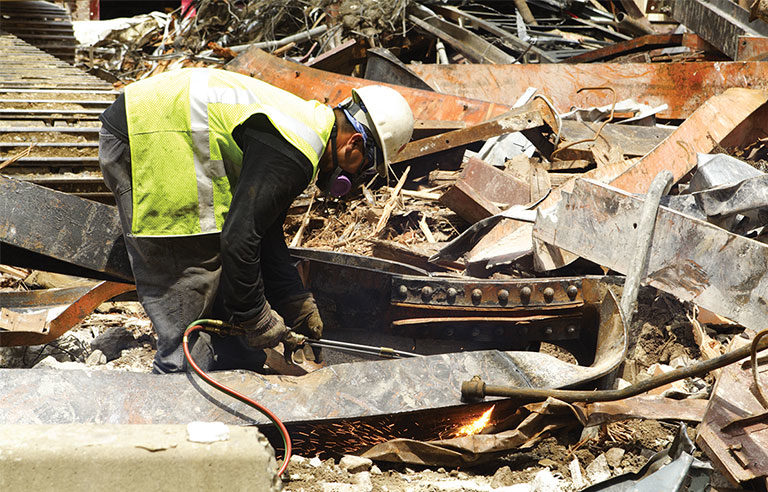Demolition work: Keep it safe

Demolition work involves the dismantling, razing, destroying or wrecking of any building or structure. Hazards of this dangerous work, according to OSHA, may include materials hidden within structural members (e.g., lead, asbestos, silica, and other chemicals or heavy metals requiring special material handling), as well as unknown strengths or weaknesses of construction materials, such as post-tensioned concrete.
To combat these hazards, workers at a demolition site should know the safety precautions they must take to protect themselves. OSHA says to:
PLAN ahead to get the job done safely. Before work begins, a competent person should survey the work. This person should closely check the condition of the structure and the possibility of an unplanned collapse. An assessment of health hazards also should be completed before work begins.
PROVIDE the right protection and equipment. The employer must determine what personal protective equipment will be required and provide it to workers. The employer also will need to educate workers on the proper use, fit, maintenance and storage of the PPE.
TRAIN employees about demo work hazards and how to safely use equipment. Under the Occupational Safety and Health Act, employers have a responsibility to provide a safe workplace for employees. Employers must train employees – in a language they understand – on recognizing and avoiding or removing hazards that may cause an injury or illness.
OSHA addresses demolition hazards in specific standards for the construction industry. Learn more at osha.gov/demolition/standards.
Post a comment to this article
Safety+Health welcomes comments that promote respectful dialogue. Please stay on topic. Comments that contain personal attacks, profanity or abusive language – or those aggressively promoting products or services – will be removed. We reserve the right to determine which comments violate our comment policy. (Anonymous comments are welcome; merely skip the “name” field in the comment box. An email address is required but will not be included with your comment.)

